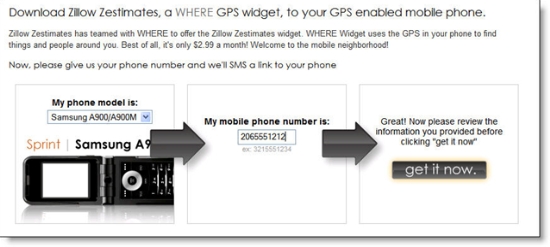 In today's special Technology Report in Wall Street Journal, the lead article was "What's New in Wireless," by Amol Sharma. The article's main focus is mobile video and advertising, but there are several paragraphs about mobile payments, mentioning the Cingular/AT&T/Citibank cellphone payment trial through MasterCard's PayPass. The only statistical backup provided was the 1.3 million Japanese mobile users signed up for NTT DoCoMo's year-old mobile credit-card service (note 1).
In today's special Technology Report in Wall Street Journal, the lead article was "What's New in Wireless," by Amol Sharma. The article's main focus is mobile video and advertising, but there are several paragraphs about mobile payments, mentioning the Cingular/AT&T/Citibank cellphone payment trial through MasterCard's PayPass. The only statistical backup provided was the 1.3 million Japanese mobile users signed up for NTT DoCoMo's year-old mobile credit-card service (note 1).
That number seemed low based on what I've been hearing about the popularity of all things mobile in Asia. It turns out the 1+ million number is just DoCoMo's credit-card slice of the mobile payments pie.
 In Japan, per capita credit card usage is just one-seventh that of United States (note 2) and stored value is much more popular. DoCoMo has 20 million stored-value mobile wallets in place, 15x the number of credit users. The mobile wallet penetration is approximately 40% of DoCoMo's 52 million wireless subscribers (note 3).
In Japan, per capita credit card usage is just one-seventh that of United States (note 2) and stored value is much more popular. DoCoMo has 20 million stored-value mobile wallets in place, 15x the number of credit users. The mobile wallet penetration is approximately 40% of DoCoMo's 52 million wireless subscribers (note 3).
That's a healthy uptake rate for a product that was introduced less than three years ago. Even the year-old mobile credit card adoption is dramatic given the country has just 130 million credit cards outstanding. DoCoMo's market share is already higher than 1% of total cards outstanding, the equivalent of 8 million accounts in the United Sates (note 4).
Interestingly, part of the reason for the popularity of cash replacements in Japan is that the lowest paper-money denomination is 1,000 Yen, or about $8.80, making coins more common and somewhat less convenient for low-value payments compared to the U.S. and its ubiquitous $1 bill. However, the stored-value mobile wallet is expected to eventually become popular in the U.S. once merchant acceptance grows, especially in the youth and underbanked segments with less access to traditional bank cards; but it won't likely reach current levels of Japanese penetration for another five to seven years (note 5).
Notes:
1. According to a Feb. 1 article in the Motley Fool, DoCoMo has 1.5 million users who've applied for and activated the credit card function in their phone. The number of outlets accepting DoCoMo mobile payments was expected to top 150,000 this month. DoCoMo allows other credit card issuers to use its ID platform to delivery card services to its customers. DoCoMo also began issuing its own mobile credit card under the DCMX brand last year. For more information, watch the DoCoMo's video about its mobile wallet (here). The wallet discussion begins at about the 4.5-minute mark of the 16 minute video. DoCoMo's ID credit-card platform and its own DCMX credit card discussion begins at the 6-minute mark and ends a little before the 10-minute mark. The rest of the video discusses i-Mode's international growth and is not directly related to payments.
2. According the Federal Reserve Bank of Philadelphia, in 2004 American's made 84 credit card purchases annually per capita, vs. 11 in Japan (see report here). According to the online CIA Sourcebook, in mid-July 2006 the population of Japan was 127 million compared to 298 million in the United States.
3. According to the company, DoCoMo has a 55% share of the Japanese cellphone market.
4. The U.S. has about 800 million credit cards outstanding (according to FRB Philadelphia, see #2.
5. See our forecast in Online Banking Report 138/139 published three weeks ago.
 Forrester Research is known for making conservative technology forecasts, doing a great job of not getting caught up in the early hype. For example, five years ago (May 2002), Forrester predicted there would be 38 million U.S. households banking online by 2006, about double the 20 million at the time. That prediction turned out to be about 10% to 15% shy of the actual total (see note 1).
Forrester Research is known for making conservative technology forecasts, doing a great job of not getting caught up in the early hype. For example, five years ago (May 2002), Forrester predicted there would be 38 million U.S. households banking online by 2006, about double the 20 million at the time. That prediction turned out to be about 10% to 15% shy of the actual total (see note 1). 


















